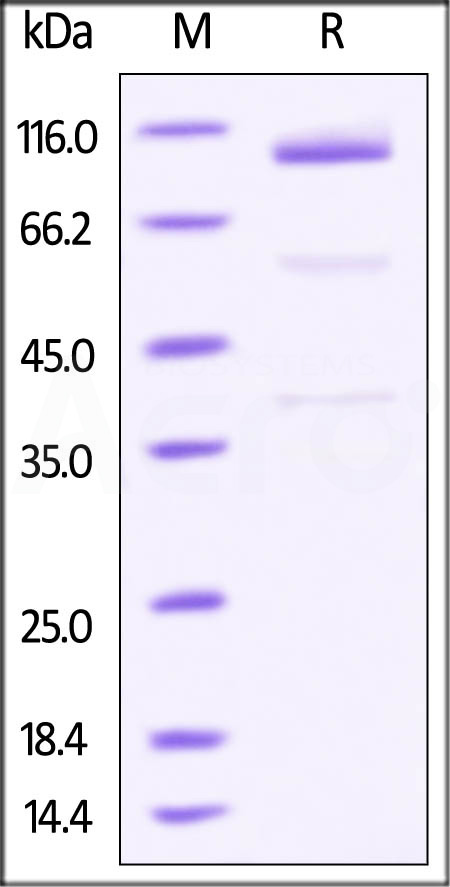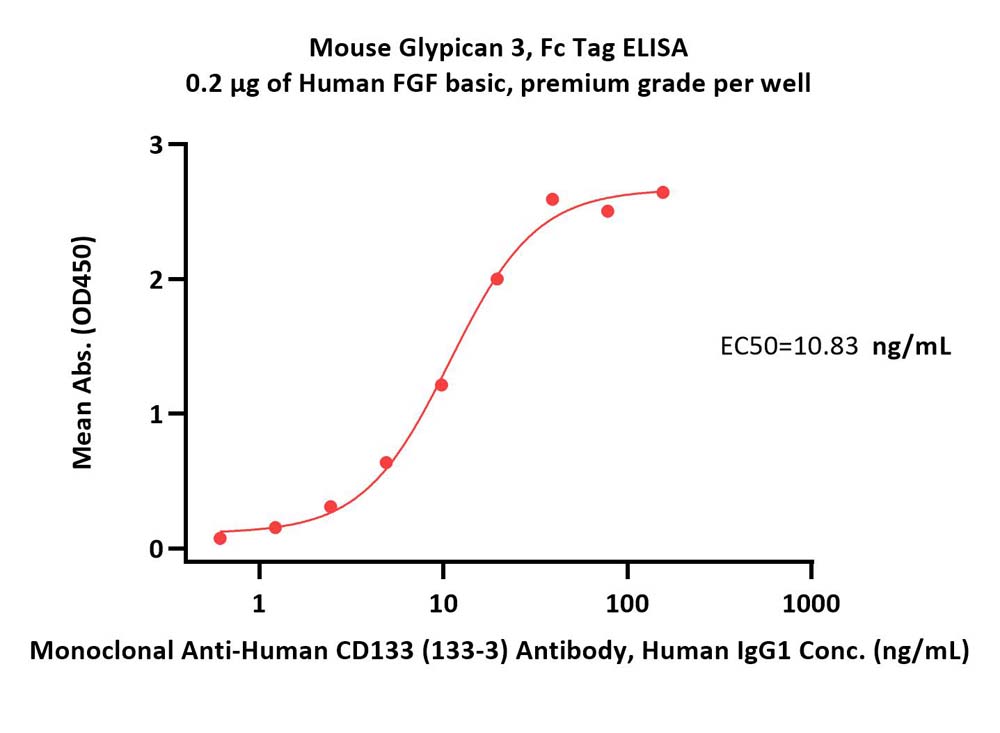CD4+ anti-TGF-β CAR T cells and CD8+ conventional CAR T cells exhibit synergistic antitumor effectsZheng, Qin, Lv
et alCell Rep Med (2025) 6 (3), 102020
Abstract: Transforming growth factor (TGF)-β1 restricts the expansion, survival, and function of CD4+ T cells. Here, we demonstrate that CD4+ but not CD8+ anti-TGF-β CAR T cells (T28zT2 T cells) can suppress tumor growth partly through secreting Granzyme B and interferon (IFN)-γ. TGF-β1-treated CD4+ T28zT2 T cells persist well in peripheral blood and tumors, maintain their mitochondrial form and function, and do not cause in vivo toxicity. They also improve the expansion and persistence of untransduced CD8+ T cells in vivo. Tumor-infiltrating CD4+ T28zT2 T cells are enriched with TCF-1+IL7R+ memory-like T cells, express NKG2D, and downregulate T cell exhaustion markers, including PD-1 and LAG3. Importantly, a combination of CD4+ T28zT2 T cells and CD8+ anti-glypican-3 (GPC3) or anti-mesothelin (MSLN) CAR T cells exhibits augmented antitumor effects in xenografts. These findings suggest that rewiring TGF-β signaling with T28zT2 in CD4+ T cells is a promising strategy for eradicating solid tumors.Copyright © 2025 The Author(s). Published by Elsevier Inc. All rights reserved.
A deep learning model of histologic tumor differentiation as a prognostic tool in hepatocellular carcinomaPatil, Hasan, Park
et alMod Pathol (2025)
Abstract: Tumor differentiation represents an important driver of the biological behavior of various forms of cancer. Histologic features of tumor differentiation in hepatocellular carcinoma (HCC) include cyto-architecture, immunohistochemical profile, and reticulin framework. In this study, we evaluate the performance of an artificial intelligence (AI)-based model in quantifying features of HCC tumor differentiation and predicting cancer-related outcomes. We developed a supervised AI model using a cloud-based, deep-learning platform (Aiforia Technologies) to quantify histologic features of HCC differentiation, including various morphologic parameters (nuclear density, area, circularity, chromatin pattern, and pleomorphism), mitotic figures, immunohistochemical markers (hepar-1 and glypican-3), and reticulin expression. We applied this AI model to patients undergoing HCC curative resection and assessed whether AI-based features added value to standard clinical and pathologic data in predicting HCC-related outcomes. 99 HCC resection specimens were included. Three AI-based histologic variables were most relevant to HCC prognostic assessment: 1. percent of tumor occupied by neoplastic nuclei (nuclear area %), 2. quantitative reticulin expression in the tumor, and 3. Hepar-1 low (i.e. expressed in less than 50% of the tumor)/glypican-3 positive immunophenotype. Statistical models that included these AI-based variables outperformed models with combined clinical-pathologic features for overall survival (C-indexes of 0.81 vs 0.68), disease-free survival (C-indexes of 0.73 vs 0.68), metastasis (C-indexes of 0.78 vs 0.65), and local recurrence (C-indexes of 0.72 vs 0.68) for all cases, with similar results in the subgroup analysis of WHO grade 2 HCCs. Our AI model serves as proof-of-concept that HCC differentiation can be objectively quantified digitally by assessing a combination of biologically relevant histopathologic features. In addition, several AI-derived features were independently predictive of HCC-related outcomes in our study population, most notably nuclear area %, hepar-low/glypican 3-negative phenotype, and decreasing levels of reticulin expression, highlighting the relevance of quantitative analysis of tumor differentiation features in this context.Copyright © 2025. Published by Elsevier Inc.
Expression Profiles of Five Common Cancer Membrane Protein Antigens Collected for the Development of Cocktail CAR-T Cell Therapies Applicable to Most Solid Cancer PatientsNakatsura, Takenouchi, Kataoka
et alInt J Mol Sci (2025) 26 (5)
Abstract: Although CD19 CAR-T has been highly effective against B-cell blood cancers, there are few reports of successful treatments for solid cancers, probably because there are few protein antigens specifically expressed on the surface of the cancer cell membrane. The key to developing a groundbreaking CAR-T cell therapy effective against solid cancers is to "overcome the heterogeneity of cancer antigens". For this purpose, it is necessary to target multiple cancer antigens simultaneously. In this study, we performed immunohistochemical analysis of various solid cancer specimens using antibodies against ROBO1, EphB4, CLDN1, and LAT1 in addition to GPC3, which we have previously studied. These antigens were frequently expressed in various solid cancers but shown to be rarely expressed, with some exceptions, in non-cancerous normal organs adjacent to the cancer. Although ROBO1 and GPC3 are often expressed in cytoplasm, there are also cases in which they are expressed on the cell membrane depending on the type of cancer. On the other hand, it has been revealed that three antigens-EphB4, CLDN1, and LAT1-are frequently expressed only on the cell membrane of cancer cells in various solid cancers, suggesting that they may be ideal targets for CAR-T cell therapy.
Trastuzumab Decreases the Expression of G1/S Regulators and Syndecan-4 Proteoglycan in Human RhabdomyosarcomaSzabo, Toth, Szabo
et alInt J Mol Sci (2025) 26 (5)
Abstract: Rhabdomyosarcoma (RMS), the most common soft tissue sarcoma in children, arises from skeletal muscle cells that fail to differentiate terminally. Two subgroups of RMS, fusion-positive and fusion-negative RMS (FPRMS and FNRMS, respectively), are characterized by the presence or absence of the PAX3/7-FOXO1 fusion gene. RMSs frequently exhibit increased expression of human epidermal growth factor receptor-2 (HER2). Trastuzumab is a humanized monoclonal antibody targeting HER2, and its potential role in RMS treatment remains to be elucidated. Syndecan-4 (SDC4) is a heparan sulfate proteoglycan (HSPG) affecting myogenesis via Rac1-mediated actin remodeling. Previously, we demonstrated that the SDC4 gene is amplified in 28% of human FNRMS samples, associated with high mRNA expression, suggesting a tumor driver role. In this study, after analyzing the copy numbers and mRNA expressions of other HSPGs in human RMS samples, we found that in addition to SDC4, syndecan-1, syndecan-2, and glypican-1 were also amplified and highly expressed in FNRMS. In RD (human FNRMS) cells, elevated SDC4 expression was accompanied by low levels of phospho-Ser179 of SDC4, leading to high Rac1-GTP activity. Notably, this high SDC4 expression in RD cells decreased following trastuzumab treatment. Trastuzumab decreased the levels of G1/S checkpoint regulators cyclin E and cyclin D1 and reduced the cell number; however, it also downregulated the cyclin-dependent kinase inhibitor p21. The level of MyoD, a transcription factor essential for RMS cell survival, also decreased following trastuzumab administration. Our findings contribute to the understanding of the role of SDC4 in FNRMS. Since HER2 is expressed in about half of RMSs, the trastuzumab-mediated changes observed here may have therapeutic implications.



 +添加评论
+添加评论






















































 膜杰作
膜杰作 Star Staining
Star Staining
















